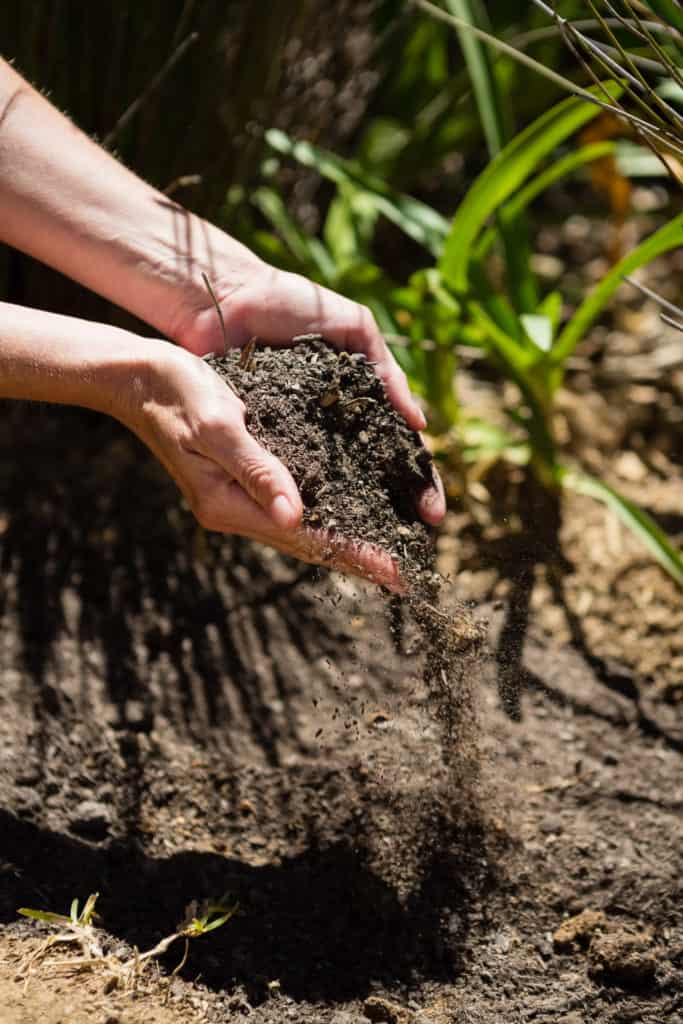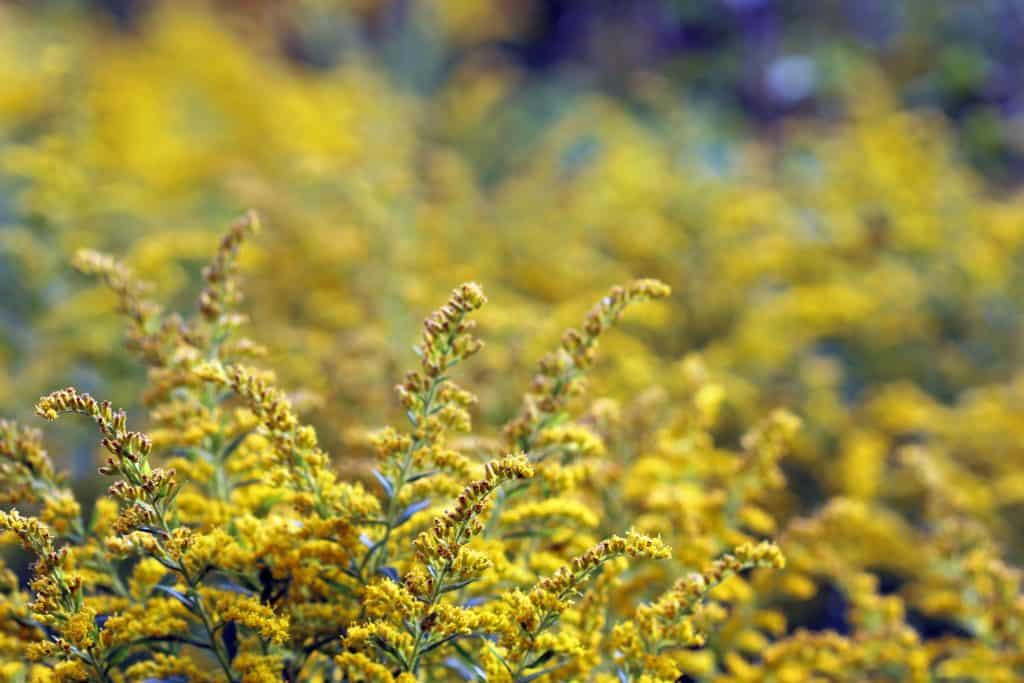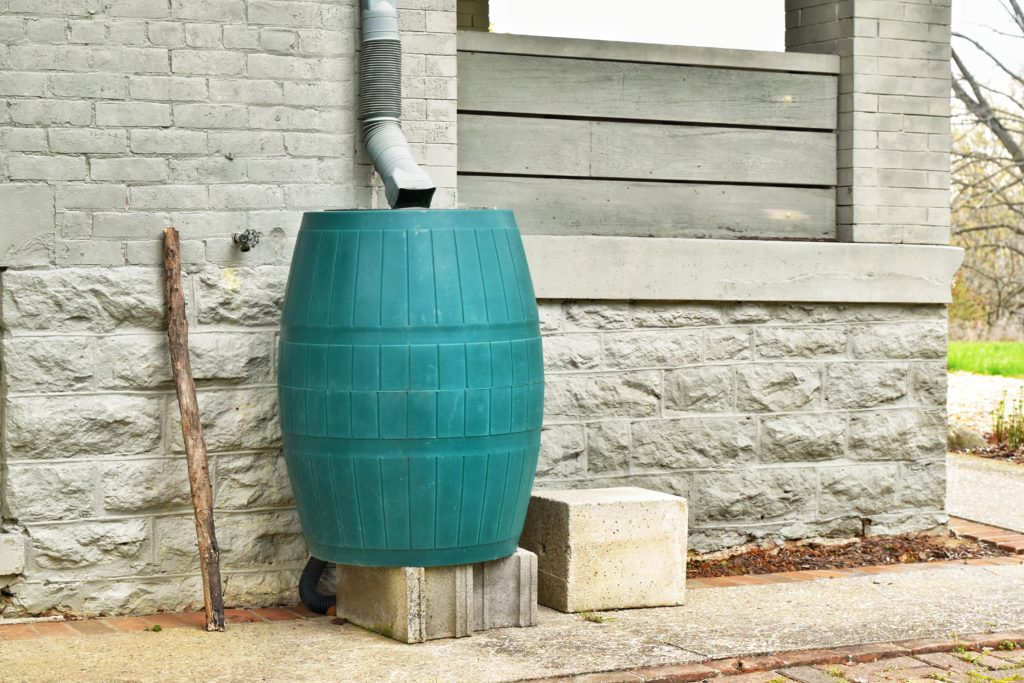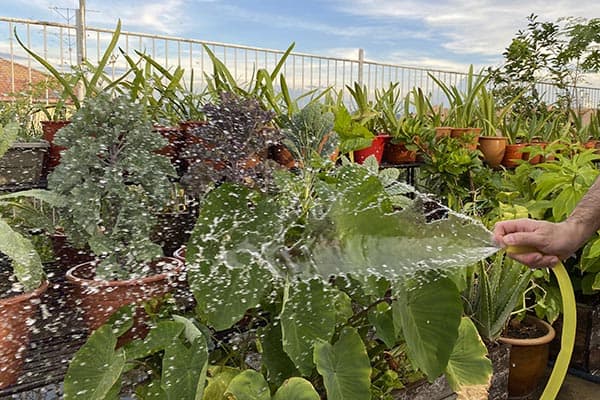Why should you care about having a proper drainage situation in your yard?
Well, those answers can be varied but most are pretty obvious. You don’t want your house to be flooded. Your plants will die if they drown. You want good garden yields. You want to keep your topsoil. And the list could go on and on…
But how to go about making sure your yard has optimal water retention and redirection capabilities?
Focus on Soil Health
Healthy soil acts like a sponge that can hold much of its volume in water. Plenty of organic material in the soil plus the resulting microbe and fungi activity = excellent soil structure. Water retention will naturally occur rather than the rain washing away on the surface of compacted soil or, worse, washing away the topsoil itself.
It’s a great idea to switch to no-till gardening. Tilling ruins the structure of the soil and therefore it becomes less stable and more easily damaged or eroded due to heavy rainfall (or wind). Plus, mulch of some kind is always used in areas that don’t have actively growing plants, which helps slow down and absorb rainfall.

Be sure all of your soil is covered at all times
Plant something! When you have soil with no protective cover, ie. plants or mulch, a heavy rainstorm can actually pull your good topsoil with it right down through the soil and wash it away.
In a garden situation, if you have a certain crop that is finished for the season, toss in some seeds for a quick growing cover crop (see all the benefits of cover crops here).
Plant Grasses
Plant deep rooted native grasses and other plants. These will naturally draw water into the soil while preventing erosion and runoff.
If you must have lawn, choose varieties that appreciate your climate so you’re not fighting to keep it alive by constant watering (not to mention having to use other unnatural environmentally destructive tools such as synthetic fertilizer and herbicides).
Try a mixture of clover with a good grass for your area. The clover is a nitrogen fixing legume, which eliminates the need for fertilizer, and stays much greener much longer. This will also require less water than a traditional lawn.

Go native
Use native vegetation and trees suited to your specific location whenever possible. Generally, they will require a great deal less supplemental water than exotic varieties. Check out the Alberta Native Plant Council website for information, if you’re located in Alberta. Consider supporting them with your time, donations, or membership!
Situate your plants according to their needs
Observe your site throughout the seasons. Check for hours of sun and shade, as well as moisture levels in the soil. If you have an area that is persistently moist, plant moisture loving plants there. Plants that prefer it dry will rot or mildew or have other disease, pest, and growth problems.
When you situate your (native) plants according to their needs, they should grow happily and without needing excessive care and attention.
Build a swale
A bioswale is a great way to redirect water while slowing it down. When planted thickly with grasses and other native plants, much of the water will be absorbed as well. Not only that, a bioswale creates a natural filtration system:
Our swale is in its baby stage yet but in it we have growing some grasses such as Ticklegrass, Tufted Hairgrass, Junegrass, and Blue Grama Grass, as well as perennials such as Blue Flax and Purple Prairie Clover. I have a variety of tiny native seedlings planted that I hope will grow and spread throughout, and I hope to collect their seeds and sprinkle them about as well.
I have also planted seeds such as Brown and Black Eyed Susans, Fireweed, Mint, Wild Strawberry, Dotted Blazing Star but unfortunately none of them have germinated this year. Fingers crossed that they will next year!
The partial season of growth in our swale has been enough to significantly reduce the amount of sitting water in our swale following rain and snow melt. I have confidence that, as the plants and grasses mature, their extensive root systems will draw any water down so we won’t have to worry about any unwanted lakes in our yard!
Slopes
Be sure your yard slopes gently away from your home so water isn’t pooling around your foundation. For obvious reasons 😉 You can also choose to purposely slope towards an area where you want more water, similar to a swale.
Rainwater collection
Collect rainwater in barrels or other systems. Not only is rainwater the best water for your plants due to its untreated nature (hopefully pollution isn’t ruining that), but you can also save money, depending on your local water situation.

You could also make yourself a little rainwater garden.
Use your downspouts
Don’t forget to extend your downspouts when rain is in the forecast! We don’t want gushing water washing away topsoil. Alternatively, construct a dry creek bed to carry the water away to where you can use it.
Water less!
Some of us water more than needed. It’s easy to do, especially when you have sprinklers on a timer. Ideally, check your soil before you water, so you can determine whether it’s needed or not.
The easiest way to check? Poke your finger into the soil, 2-3 inches down. If the soil is dry, it’s time to water! If not, hold off for another day and check again. You can also buy fancy-dancy moisture sensors, but I honestly have never tried one so I’m not sure how well they work!
In conclusion
Hopefully some of these tips will be useful for you and applicable to your location and needs! What issues are you facing in regards to water (or lack thereof!) in your landscape?
Happy Gardening!

